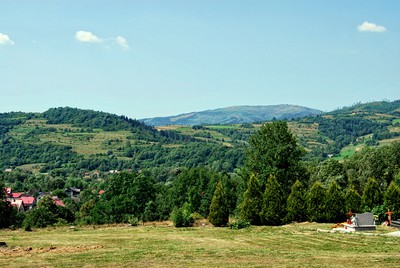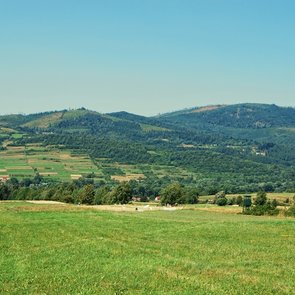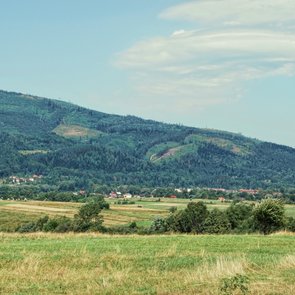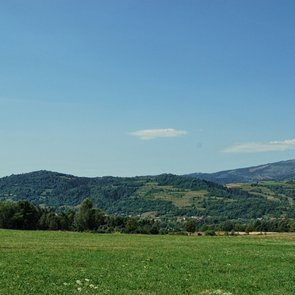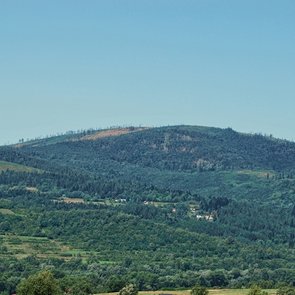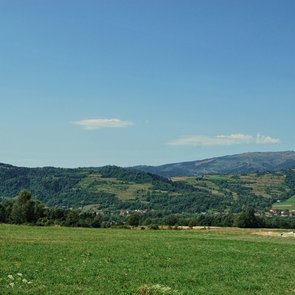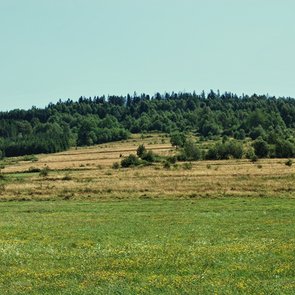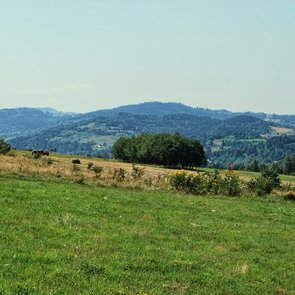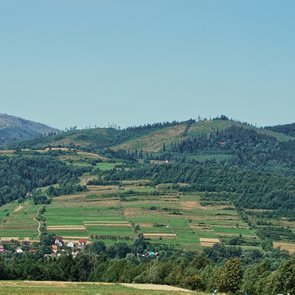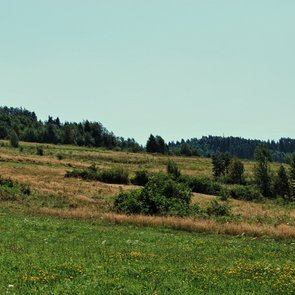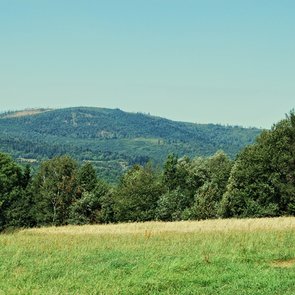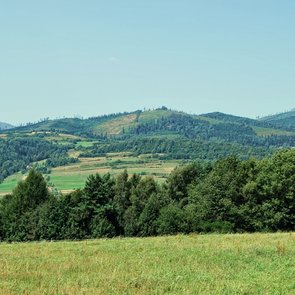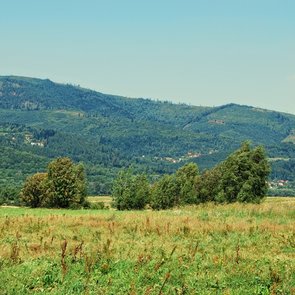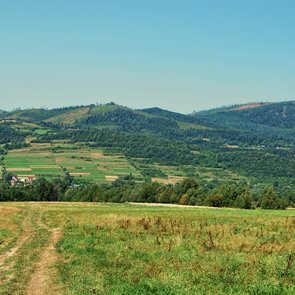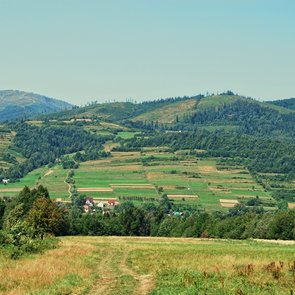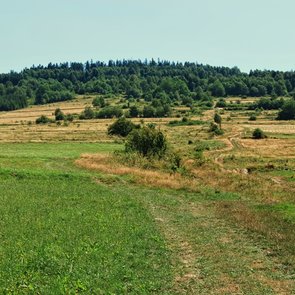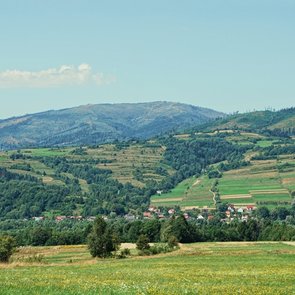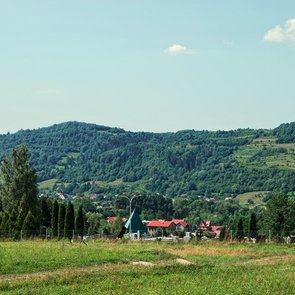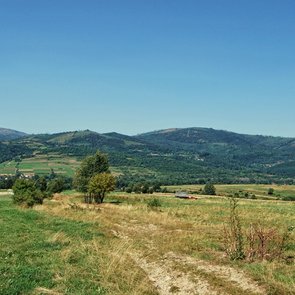Délka 42km vede přes území obci Węgierska Górka, který přešel jako turista a navštívil kněz , biskup a pak kardinál Karol Wojtyła.
Začátek je v centru Węgierské Górki na Náměstí Jana Pavla II, pak vede mezi jinými k kostelům Proměnění Páně w Węgierské Górce a sv. Kateřiny ve vesnici Cięcina, pak jde přes Hole Lipowská a Boracza k kostelu Panny Marie Čenstochovské v Żabnicy.
Jedna z posledních zastávek je církev sv. Maxmiliána Maria Kolbe v Ciscu, jmenovan taky „zázrakem jednoho dne”. Je to první taková stezka v diecézi bielsko-živecké.
Nápad o utvoření stezky přišel před několia lety. V 2005 roku z iniciativy starosty Piotra Tyrlika, tehdejšího ředitele Promočního Střediska Mariana Kurowského a Tadeusza Gołucha –Organizace Papežské Stezky jmenoval ho zmocněncem koordinátora, konalo se první organizační setkání.
Pastýřská Papežská Stezka- také jméno obdržela, v její tvoření zúčastnili farnosti a faráře, obecní úřady, místní nadlesnitví a spousta obyvatelů. Svůj začátek má v centru Węgierské Górki na Náměstí Jana Pavla II, pak vede přes místa a stezky, které navštivil během lyžování nebo putování Karol Wojtyła, honorární občan obci Węgierska Górka (kostel ve vesnici Cięcina, Hole Lipowská, Hole Boracza, Prusów, kostel ve vesnici Żabnica a Cisiec).
Projekt " Papežská Stezka v obci Węgierska Górka" získal třetí místo ve slezským vojvodství v konkurze "Přátelská vesnice". Zvolený byl nejlepší projekt v oblasti infrastruktury, realizovan ve venkovských oblastech s podporou fondů EU.
Zastávka I Náměstí Jana Pavla II
Náměstí se náchazí v centru, před Obecním Uřádem. Zde stojí obelisk z pískovce, s křížem a pamětní deskou. Na náměstí najdeme 27 ušlechtilé smrki- symbol 27 let jeho pontifikátu a dub z semen, které posvětil Svatý otec, dárek nadlesnictví Węgierska Górka. Pak sídliště XX výročí RP. Ulice Zielona a Kościuszki kardinál Wojtyla prošel během pastoračních návštěv.
Zastávka II Kostel Proměnění Páně
6 června 1972 roku se konala vizitace ve farností Cięcina Kardinála Karola Wojtyły. 21 ledna 1976 roku předsedal pohřbu tragicky zesnulého kněze Jana Bryndzy.
Čtyři měsíce před volbou papeže 18 VI 1978 roku kardinál Karol Wojtyła provedl akt položení základního kamene pro stavbu kostela Proměnění Páně. oslavil tady mše. Kostel byl vatsven v letech 1977-1981. Ulicí Jana pavla II jdeme do kostela sv. Kateřiny.
Zastávka III Kostel sv. Kateřiny.
Kardinál Wojtyła navštivil kostel během mnoha vizitace. Ulicí sv. Kateřiny směrem k Cięcině Górné ,jdeme vedle gymnázium Ks. Profesora Józef Tischnera a základní školy jmeném Ústavy 3. května.
Zastávka IV Hole Lipowska (1324)
Turistická bouda , kterou Karol Wojtyła navštivil ve dnech 9-12 února 1958 roku.
Zastávka V Hole Boracza
Hole Boracza se náchazí mezí vrcholy Prusow a Robaczy Wierch. Během vizitace ve farností Żabnica a Milówka, byl tady ks. biskup Wojtyła.
U vrcholku Prusowa najdeme kaple, kterou taky navštivil ks. kardinál Karol Wojtyła.
Hřbetem Prusów a Palenica přijdeme do kostela sv. Maxmiliána Maria Kolbe v Ciscu, přes městečko Milówka do kostela Panny Marie Čenstochovské v Żabnicy.
Zastávka VI kostel Panny Marie Čenstochovské v Żabnicy.
Stavbu kostela se začala v 1910 roku. V roku 1966 ks. Biskup Karol Wojtyła udělil v tomto kostele svátost biřmování.
Zastávka VII Kostel sv. Maxmiliána Maria Kolbe
Kostel navštivil kardinál Karol Wojtyła při pastoračních návštěvách dvakrát v 1973 a 1977 roku. Historie vzniku a stavby farního kostela vyjadřuje problémy, s nimiž se setkala církev v Polské lidové republice.
Etapy stavby kostela s názvem "zázrak jednoho dne"
Ve vesnici je základní škola Jana Pavla II. Odpovídající dokumenty byly předane Svatému otce v roce 2000 ve Vatikáně.
Škola se aktivně účastní v každoroční oslavách shromáždění škol jménem Jana Pavla II, které se konají v různých částech Polska. Ulicí Kardynała Stefana Wyszyńského přijdeme na náměstí Jana Pavla II v Węgierské Górce. Kardinál byl tady mnohokrát, kdy jel do farnosti Milówka, Rajcza, Ujsoły a jiných. Toto je poslední úsek naší cesty.
Císařská trasa. Vznikla v 18. století během panování císaře Josefa II. Je to nejkrátší komunikační trasa spojující Krakov z Vídni. Vedle části Cesty vedoucí do vesnici Cisiec označena je pěší trasa o délce 2 km, vede Hlavní Beskydskou Cestou jmeném K. Sosnowského (9 zástavek a vyhlídkové místo s panoramatickým výhledem na Beskyd).

